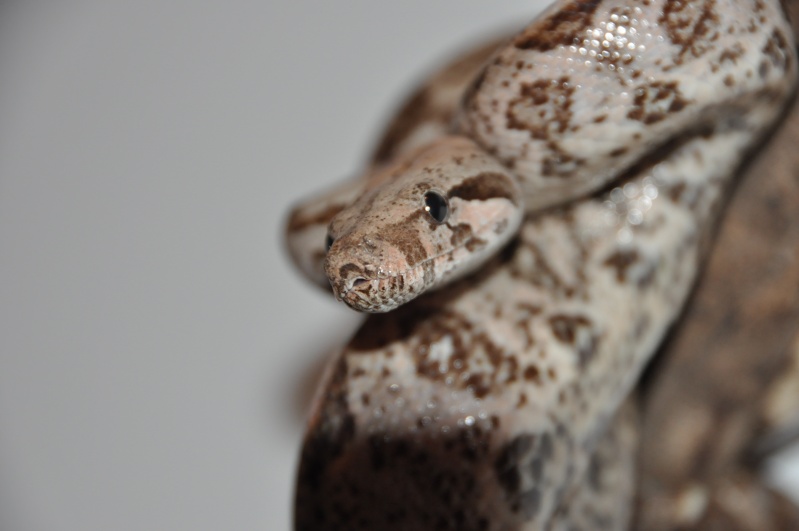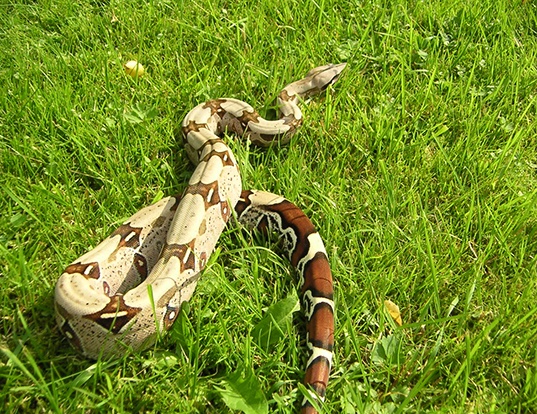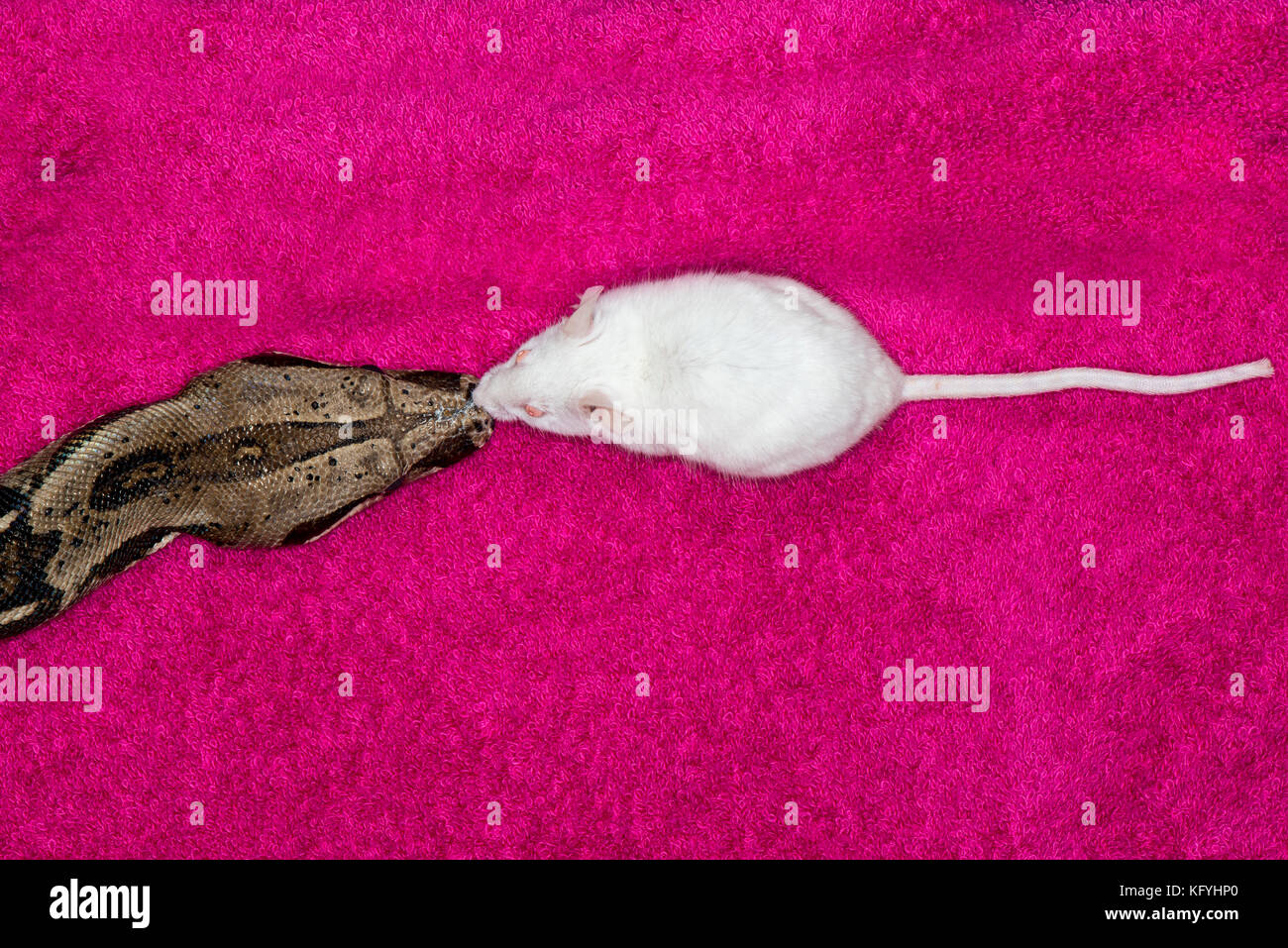

When eating boa constrictors do not suffocate their prey. When young they are mostly found in the trees but they move back to the ground as they become older and heavier. During this period they are also more defensive. This blocks their vision and leads to them becoming inactive for a couple of days.
#SCIENTIFIC NAME FOR BOA CONSTRICTOR SKIN#
During this time oil under the skin lubricates it to move it off. The boa constrictor goes through a shedding period occasionally. They emerge mostly at nights but sometimes will bask in the sun throughout the day when it is colder. The boa constrictor is a solitary species. These young are independent within a few minutes.

The female gives birth to 10 to 64 eggs with an average of 25. The gestation period of 100-120 days is then counted after this. During this period the middle of the body swell to a similar size as if she has eaten a large meal.Īfter ovulation a shed will occur that is longer than this. When she ovulates the stored sperm will fertilise the egg. The female will breed once every 2 years.Īfter mating the female can store the sperm for up to a year. They are attracted by the scent the female emits from her cloaca. The male will wrestle for the right to mate the females. The boa constrictor will breed during the dry season which is normally April to August. They are competent swimmers and can regularly be found near bodies of water. These areas provide cover and the correct environmental conditions. While they can be found in a range of habitats such as semi-deserts, open savanna and cultivated fields they thrive in tropical rainforests. There are also some populations on the islands off the coast off these countries. They also range through Trinidad and Tobago, Guyana, Belize, Suriname, French Guiana, Brazil, Bolivia, Uruguay and Argentina. They can found throughout Belize, Guatemala, Honduras, El Salvador, Nicaragua, Costa Rica, Panama, Colombia and Ecuador. They can swim but would rather stay on dry land.The boa constrictor is found throughout South and Central America.The Common Boa flicks its tongue to pick up scents.It is a member of the Boidae family found in Central America. The longest recorded Boa was measured at 5.4 m long. Colombian Red Tail Boa (Boa constrictor imperator) is a large, heavy-bodied species of snake.Scientific name: Boa constrictorSynonym:Constrictor constrictor. Most boa species are not threatened or in danger of immediate extinction, however most have a protected status in their regions. Common name: Boa Constrictor, Ampalagua, Giboya, Masacuate. Their natural predators include caimans, jaguars and humans. Threatsīoas are hunted for their skins as well as for sale in the exotic pet world. Food at the ZooĪt Riverview, the boa is fed large rats twice a month. They will also hunt birds, mammals and other reptiles and generally hunt at night. The Boa Constrictor will often prey on bats by hanging from trees or waiting at the mouths of caves. To accomplish this, Boa Constrictors are extremely muscular and usually heavy bodied snakes. Very quickly the prey will asphyxiate (suffocate). As the prey exhales, the tightening coils prevent the prey from inhaling. Scientific name: Boa constrictor imperator Other common names: This is the boa subspecies most often encountered in captivity. This involves the snake tightly coiling around the prey, not crushing it, but severely restricting movement. Ecology and habitatĪs their name suggests, Boa Constrictors constrict their prey. Boa Constrictors become sexually mature at about 2 to 3 years of age. Boas are viviparous, meaning that the female does not lay eggs and the young are fully formed at birth.Īfter a gestation period of 4 to 8 months, 6 to 60 live young are born.

The female releases a scent to attract a male. They are solitary animals except during the breeding season, and mating occurs about once a year. Boas are both terrestrial and arboreal, especially smaller individuals. Behavior and reproductionīoa constrictors are very peaceful and elusive and will avoid any contact with large animals. The oldest common boa in captivity was recorded to have lived 40 years. Every snake has a distinct pattern of lines, spots, ovals and diamonds.īoas can live up to 25 years in the wild and up to 30 years or more in captivity. They have a narrow head with a pointed snout and can be coloured black, olive-green, brown or grey. Instead, they will typically bite them and then crush and suffocate. Although they have many common physical characteristics, they do not subdue their prey by coiling around them to suffocate them. Boa constrictors are large snakes that can be between 1 to 4 m (3.5 to 13 ft.) in length and weigh approximately 35 to 45 kg (77 to 99lb). Despite their scientific name, Coluber constrictor, black racer snakes are not a constricting species such as boa constrictors.


 0 kommentar(er)
0 kommentar(er)
